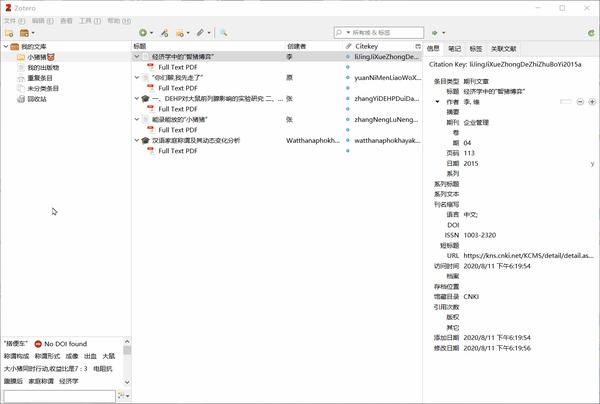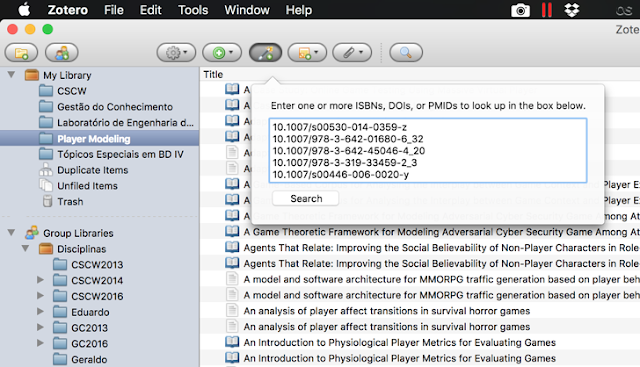

Where Zotero tries but fails to download an attachment (typically a PDF file), it displays a red X in front the attachment.Īs far as they are available, Zotero automatically adds any keywords or subject terms on the translated page as tags. PDF attachment for proxied resources is less reliable for the connectors than for Zotero Standalone.
#ZOTERO BIBTEX FULL#
This will only work where you have access to the full text PDF through your institution-either by logging in to a proxy while accessing the resource from off-campus or by IP recognition on campus or via Virtual Private Network (VPN). For most academic journals and article databases (such as EBSCO or JSTOR), Zotero attempts to download and attach a copy of the full text of an article as a PDF. Automatic Tags and Attachmentsįor many sites, Zotero takes a snapshot of the current site, or, in the case of newspapers or magazines, often of the single page or print view of an article. Select all items you want to import and click OK (or press return) and Zotero will import all selected items, again informing you via the gray pop-up about the items it imports. the search results of a catalog or the table of contents of a journal. A gray pop-upĪt the bottom right of the screen will let you know that Zotero has successfully imported the item, into which collection (if any) the item is placed, and which attachments are When you click the folder icon, Zotero will present you with a selection dialog with the title of all items it recognizes on the site-e.g. all icons except the manila folder), Zotero will then import the citation information for the item on the page. Most common are a lined sheet ( ) for journal articles, a blue book for book ( ) and a manila folder ( ).įor single items (i.e. The icon depends on the type of item Zotero identifies on the page. Whenever Zotero supports importing directly from a website, you will see a little icon at the right end of the URL bar (in Safari, the icon is to the left of the URL bar). The principal way to add items into Zotero is from the web-browser, where you do most of your research. adding a webpage with basic information from the browser.adding PDF files and then retrieving the “metadata,” i.e the citation information, online.adding them using an “identifier,” i.e.importing them from many bibliographic data formats (RIS, bibtex, MODS, etc.).using website translators via the Icon in the URL bar.In rough order or priority, you can add items The different methods have different advantages and disadvantages and being aware of them will help you. If you become a frequent user, you are likely to use most, if not all of them.

There are many ways to get items into Zotero.



 0 kommentar(er)
0 kommentar(er)
